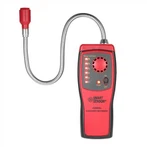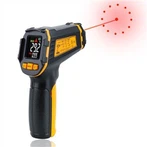How to use a multimeter to check short circuit, open circuit and leakage?
There are many application methods of the multimeter. Below I will list the common methods of checking the short circuit, open circuit and leakage of the multimeter. I hope it will be helpful to everyone. Inadequacies are welcome to add.
multimeter check short circuit
To check whether there is a short-circuit point in the line, first cut off the circuit breaker, then turn off all switches and all devices in the line (unplug all devices that can be unplugged).
Select the "buzzing gear" of the multimeter, and measure at the lower port of the circuit breaker - two test leads, respectively contact the zero line and live line at the lower port of the circuit breaker. If the multimeter beeps, it proves that there is a short circuit in the line; otherwise, there is no short circuit.
multimeter circuit breaker
Still cut off all the switches, the multimeter selects "buzzer". Make sure you want to measure the direction of the line and find the ends of the wires.
When measuring, the two test leads of the multimeter touch the two ends of the wire respectively. If there is a buzzing sound, it proves that there is no open circuit in the wire; if there is no buzzing sound, it proves that there is a break in the wire.
What should I do if the distance between the two ends of the wire is too far? Find a wire that is confirmed to be intact and strip the ends of the wire. One end of the wire is connected to the multimeter, and the other end is used as a test lead to contact the line to be tested-this is to use the wire to extend the length of the multimeter test lead, which is often used in actual operation.
Multimeter to check leakage
Don't turn off the circuit breaker this time, just turn off all the switches in the line and unplug all the plugs. Select "750V~" with the multimeter, and measure at the circuit terminal (measure at sockets, switches, etc., not in the distribution box).
Measure the voltage between live wire-neutral wire and live wire-ground wire respectively. If the two measured values are the same, or the first value is smaller than the second, it proves that there is no leakage in the line.
If the first measurement value is greater than the second, it proves that there is leakage in the line - the larger the difference between the two, the more serious the leakage.






